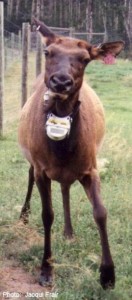Dr. Anthony (Tony) P. Farrell, External Keynote
Climate Change: Fishing for Answers
Tony Farrell holds a Tier I Canada Research Chair in the Faculty of Land and Food Systems and in the Department of Zoology at the University of British Columbia, Canada. His cardiorespiratory research program examines animals whose hearts function without oxygen for days to months, such as primitive hagfish, crucian carp and freshwater turtles, through to polar fishes that sustain a heartbeat at -1oC. His discoveries are applied to everyday issues such as fish conservation and aquaculture.
His seminar will focus on the thermal biology of fishes. Discoveries from his research group will be used to illustrate how the cardiorespiratory athleticism of sockeye salmon, which normally matches the remarkable needs for its once-in-a-lifetime spawning migration up Fraser River, can become lacking for some sockeye populations faced with an unusually warm river. While some fish populations are clearly threatened by the rise in global temperature, other populations may have a limited potential to adapt. Furthermore, studies of cardiac physiology at supra-optimal temperature suggest that the heart may become a weak link in the supply chain to deliver O2 to active tissues. Understanding the basis for the weak link may be advantageous in more quickly discovering which species threaten our environmental integrity and food security.
http://people.landfood.ubc.ca/anthony.farrell/

Dr. Evelyn Merrill, U of A Keynote
From Animal Movement to Management
Dr. Merrill is a professor at the University of Alberta in the Department of Biological Sciences. Her research focuses on the foraging and nutritional ecology of ungulates, plant-herbivore interactions, and landscape modifications on wildlife populations, and she has an interest in linking small scale processes with large scale patterns in animal distributions and population dynamics. Dr. Merrill and her lab are key contributors to both the Ya Ha Tinda Longterm Elk Monitoring Study and the Border Deer Study.
Over the past 2 decades new technologies in remote sensing of animal locations including GPS technology have opened the door to studying animal movement behaviors over large spatial and short temporal scales. The detailed information on animal movement can inform models that managers use to address wildlife conservation problems. I present how the students in my lab have developed movement models and provide examples of their application to address 3 wildlife management problems in west central Alberta: (1) improving the success of elk translocation programs, (2) understanding the effect of linear features on wolf-elk interactions, and (3) assessing cumulative impacts of industrial development on elk habitat effectiveness under different management scenarios.


